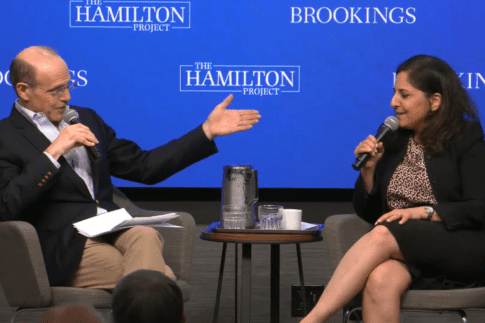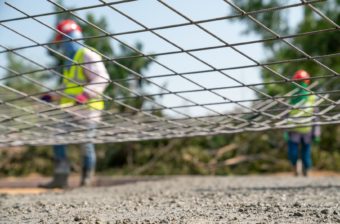On April 17, The Hamilton Project hosted a webcast to discuss the safety net for non-elderly adults who do not have dependent children and do not receive disability-based benefits. In conjunction with the event, The Hamilton Project released three papers that explore the gaps in the safety net for this population, discuss prevailing misconceptions about those who make up this population, and compare the U.S. to other affluent countries that achieve greater poverty reduction for this group.
The event began with remarks from Wendy Edelberg, Director of The Hamilton Project, who challenged the idea that “ABAWDs” (able-bodied adults without dependents) do not need or deserve government assistance.
Next, the event featured a fireside chat with Neera Tanden, Director of the U.S. Domestic Policy Council, and moderator Jason DeParle of The New York Times. Tanden opened by stating that opposition to helping this population is less about budgetary concerns than “a sense of deserving or undeserving poor people.” She highlighted the Affordable Care Act as a successful effort to transform healthcare from a question of deservingness into a right; in contrast, she suggested that opposition to the Child Tax Credit (CTC) expansion largely centered around beliefs that people were misusing or taking advantage of the benefit.
When asked about how to build political support for this population, Tanden emphasized the importance of changing people’s understanding of both the population of interest and the social safety net: “There’s a wide diversity of people who are in this population, and the safety net itself is not a permanent state.”
The fireside chat was followed by a panel with Robert Greenstein (Brookings), Janet Gornick (The Graduate Center, CUNY), Bradley Hardy (Georgetown University), and Ken Zimmerman (Fountain House), moderated by Sharon Parrott (Center on Budget and Policy Priorities).
Hardy opened the panel by highlighting key characteristics of working-age adults who do not have dependents and do not receive disability-based benefits: Many within this group are low-income, women, white, have fewer educational credentials, and are actively within the labor market.
Greenstein then discussed the data about this population. He stated, “Today, one of every two people in the United States who lives below half the poverty line—in deep poverty—is a member of this group.” Non-elderly, childless adults have higher rates of deep poverty than any other group and make up the bulk of the homeless population.
“Today, one of every two people in the United States who lives below half the poverty line—in deep poverty—is a member of this group.”
– Robert Greenstein
Gornick highlighted key findings from her and her co-authors’ cross-national analysis: Compared to other affluent countries that achieve greater poverty reduction for this population, the United States has a much higher share of low-paid workers, its taxes move more people in this population in poverty, and its income transfers are much more meager.
Adding a perspective from the ground, Zimmerman emphasized that those in this population are part of families and communities, stating, “It’s absolutely paramount that we understand the real-world consequences of this aren’t just on individuals, but on the families and communities that they’re part of.”
The event concluded with a discussion about potential policy solutions. Greenstein’s proposed solutions included expanding the Earned Income Tax Credit (EITC), reforming Supplemental Nutrition Assistance Program (SNAP) eligibility restrictions, increasing the number of rental vouchers, raising the minimum wage, and improving unemployment insurance. Zimmerman offered two priorities for improving services: increasing funding and targeting services to the lived experiences of individuals.
This is an event summary of “Securing the safety net for working-age adults.“




